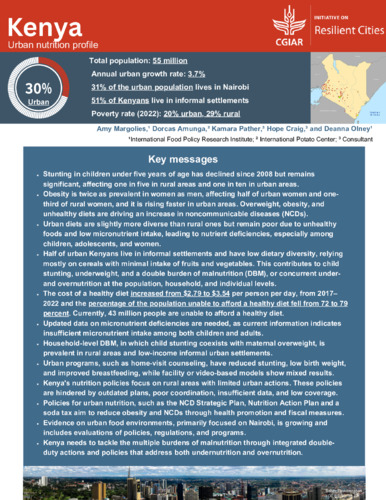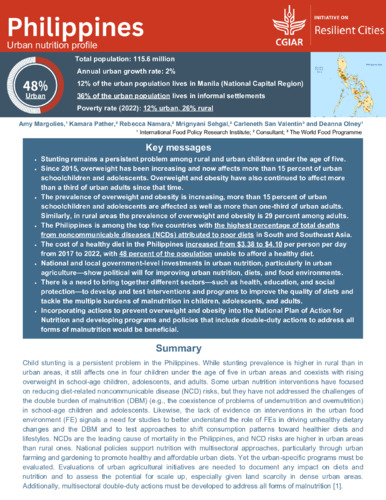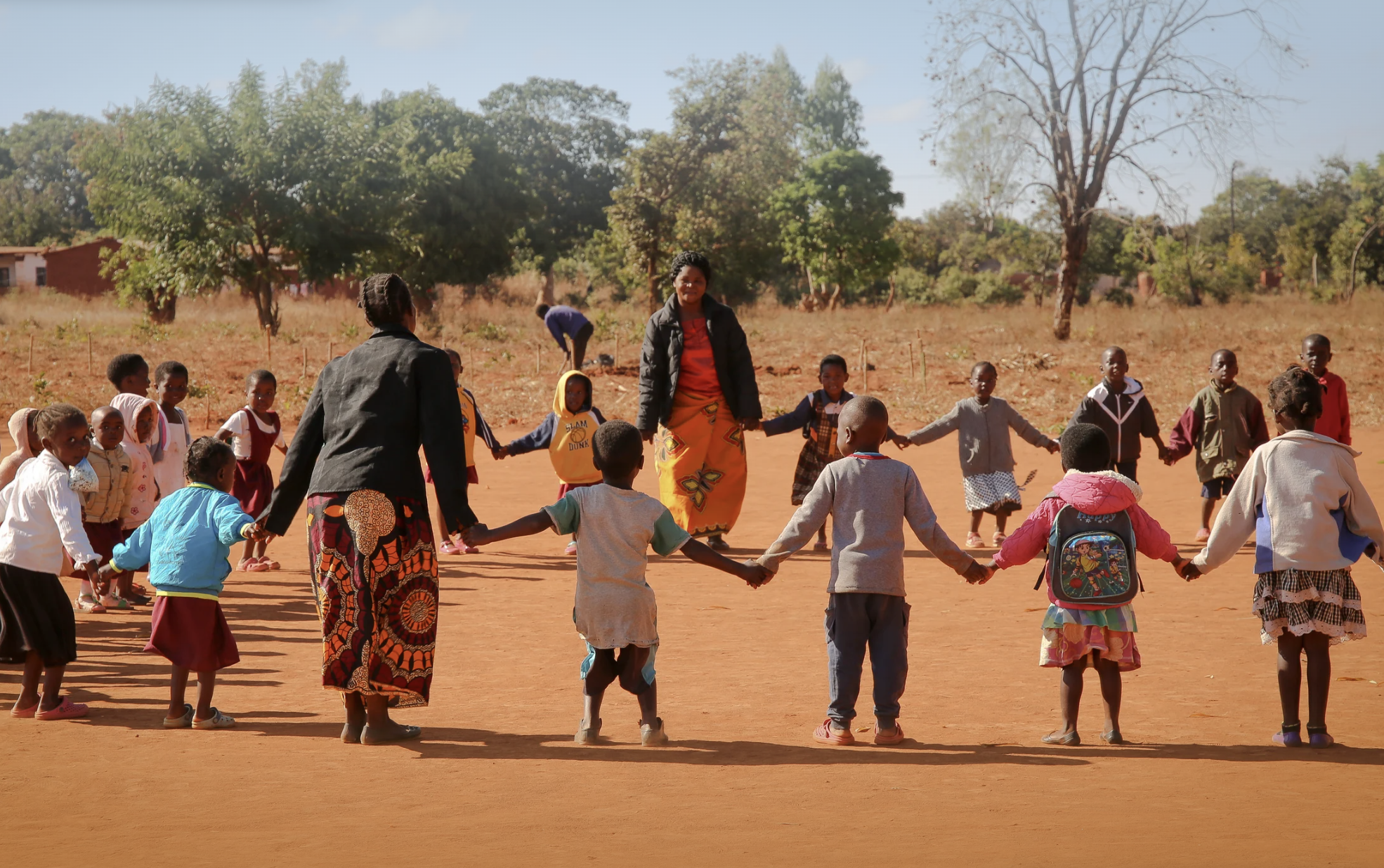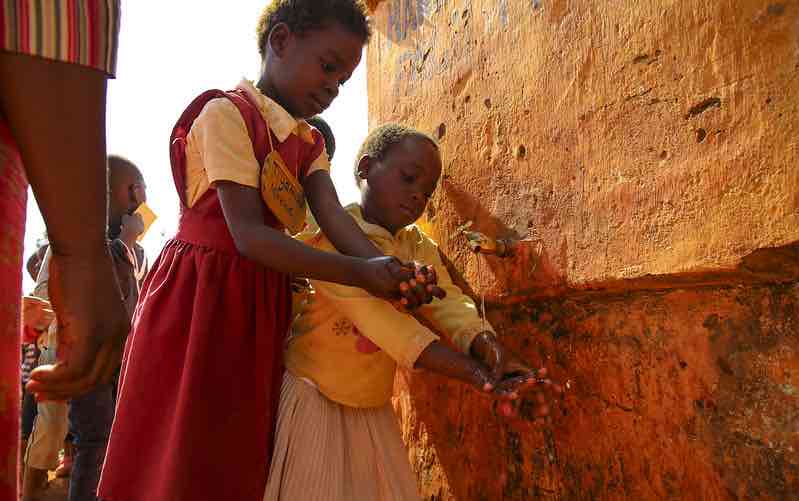Resilient Cities urban nutrition profile: Kenya
Despite progress in reducing child stunting over the past 15 years, Kenya is now facing new nutrition challenges, including overweight and obesity. The double burden of malnutrition (DBM), which is the coexistence of under- and overnutrition within individuals, households, and populations [1], manifests as child stunting and adult overweight (mostly in women) at the population and household levels. Dietary diversity is low and affects different population groups (particularly young children, adolescents, and women), predisposing them to micronutrient deficiencies. However, recent data on micronutrient intake and status are lacking. Households living in urban areas are vulnerable to being overweight, a consequence of increasingly unhealthy dietary patterns. In Kenya’s informal urban settlements, limited dietary diversity, reliance on cereals, and widespread consumption of ultra-processed foods (UPFs) contribute to high rates of child stunting, underweight, and the DBM, with affordability and accessibility driving food choices. Compounding factors include food safety concerns, clustering of unhealthy food vendors, and external shocks. Urban nutrition interventions have had mixed results, with some programs improving child health and maternal knowledge, but others showing no significant impact. Kenya aims to eliminate malnutrition by 2027, but national policies focus mostly on rural areas, leaving urban nutrition challenges insufficiently addressed. Programs such as Afya Jiji and the Nairobi City County Food System Strategy target urban health, but gaps in urban-specific strategies, poor coordination, and limited funding hinder progress. The national school meals program serves only a small portion of schools, and urban food policies are still underdeveloped.
Authors
Margolies, Amy; Amunga, Dorcas; Pather, Kamara; Craig, Hope; Olney, Deanna K.
Citation
Margolies, Amy; Amunga, Dorcas; Pather, Kamara; Craig, Hope; and Olney, Deanna K. 2025. Resilient Cities urban nutrition profile: Kenya. Resilient Cities Country Profile. Washington, DC: International Food Policy Research Institute. https://hdl.handle.net/10568/173368
Keywords
Africa; Eastern Africa; Dietary Diversity; Micronutrient Deficiencies; Obesity; Stunting









